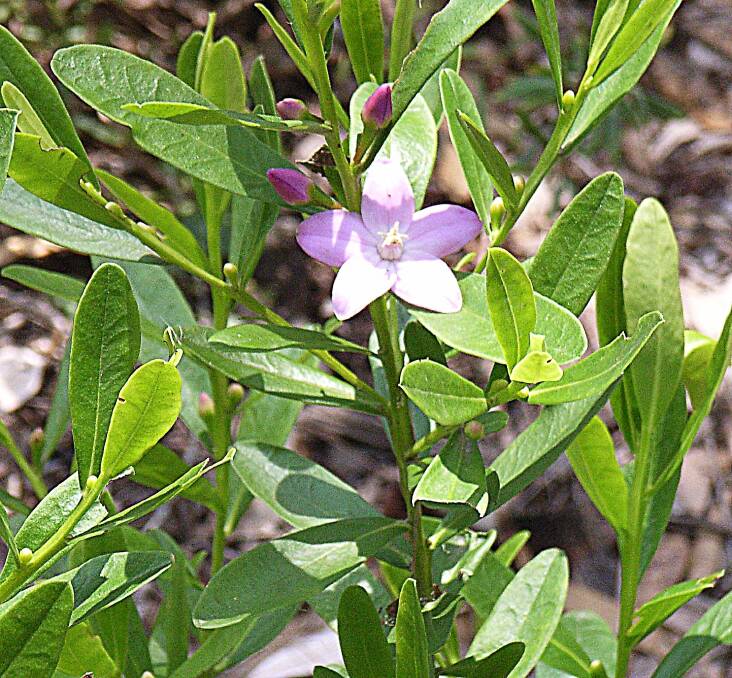Small gardens need small plants. Big gardens that have already received far too much planting from an over-enthusiastic gardener also need small plants that might, just possibly, fit in.
Subscribe now for unlimited access.
$0/
(min cost $0)
or signup to continue reading
Which is why I have fallen in love with Grevillea 'Pink Midget' and will plant one or more as soon as I find somewhere to plant it … which may not be until an earthquake gives us an unexpected extra metre more of garden. Pink Midget is a groundcover and, given good sun (which it won't get in our deep valley, but I can hope it is forgiving), it blooms almost all year round with bright lolly- pink flowers. This should be hideous, but isn't.

Pink Midget is particularly glorious just now. Bright pink is …okay…in summer, but in the kinder light of Autumn's it's brightness is a stunner.
I also have an unrequited love affair with dwarf varieties of Banksia marginata and B. spinulosa. They start blooming about now, keep flowering well into winter, with candle shaped flowers in yellows, golden russet, bright red or even an almost green, depending on species and cultivars. And they are all gorgeous. The honeyeaters also love them. Unlike the grevilleas, the dwarf banksias will flower happily in either sun or dappled shade which means they should do wonderfully here. They will also tolerate containers in courtyards and patios and a lot of neglect, which make them my kind of flower.
Croweas or waxflowers (a name shared by Eriostemons – now renamed as Philotheca to add to the levels of naming confusion) bloom in sun or dappled shade. The only thing they hate is overwatering. They'll grow under eaves, as long as they get a little water sometimes, under gum trees, where almost nothing else will thrive, and in pots on patios.
They usually don't grow more than a metre high and flowerand flower through summer and autumn. Like all plants, they do best if given a light prune now and then to keep them shapely and remove spent flowers. The best time is when you get around to it; the very best time is in winter, when they have finished blooming for the season.
Then there is Bauera rubioides 'Tassie Princess' (why must native cultivars have such over-cute names?). Tassie Princess' grows to about a metre high too, or less if well pruned, with deep pink flowers in winter and spring. It's frost resistant and the wallabies seem to ignore it. So far.
You can never tell with wallabies.
If you have a shady position and don't cry when your beloved blooms cark it, you can try Boronia keysii. More bright pink flowers – bright pink doesn't seem gaudy though in mid-winter or when the individual flowers are as dainty these are – and again it only grows to a metre high. But it does need the perfect spot. Not too hot, not too dappled shade, absolutely perfect drainage but not drying out and whatever else it may demand. I'm not sure exactly what else they do demand, but do know I have never found it. I haven't managed to keep a boronia of any variety alive for more than three years. On the other hand, I have never done anything to help them stay alive except bung them in from the pot and water a few times afterwards.
If you want a truly fragrant boronia though, go for brown boronia, Boronia megastigma, with reddish brown flowers that are a lively contrasting dull yellow inside – not spectacular at all but the perfume is glorious (if you can smell it – and if you can't you can blame your genome).
Give perfect drainage, regular pruning in late spring when the flowering is over and speak to it kindly and often. The latter may not work but, as I've never tried it, it might be what my former boronias growing technique lacked. That and the pruning.
Come to think of it, maybe, just maybe, if I do a lot more pruning, I can fit a few more small plants in …
This week I am:
- glad I slipped a small harvest of quinces into calico drawstring bags, otherwise the birds would have eaten them. We can decoy the birds from most other fruits but, for some reason, not quinces. But the bags keep off both pests like fruit fly and oriental fruit moth as well as even cockatoos. In fact cockatoos tend to get the huff and fly off when their beaks fail to do any damage. Or maybe we just have huffy cockatoos.
- eating many native finger limes, and giving them to friends. They consist of delicious little 'caviar' globules (the name caviar seems to have stuck), tasting intensely of not too sour lime. Kids love them if you let them pick up globule after globule with the tips of their finger.
- watching the cattle down the valley get so fat they look like they have been shined with boot polish. The wombats and wallabies are plump too.
- avoiding leeches questing for my blood. Leeches are the downside of green lush autumns. Big, fat, long leeches …
- still picking apples, eating apples, stewing apples, freezing apples … and
- glorying in the first bright yellow nerines, the biggest nerine blooms I have ever seen after all this rain.
f. @jackiefrenchauthor
t. @jackie_french_
i. @jackie_french_

